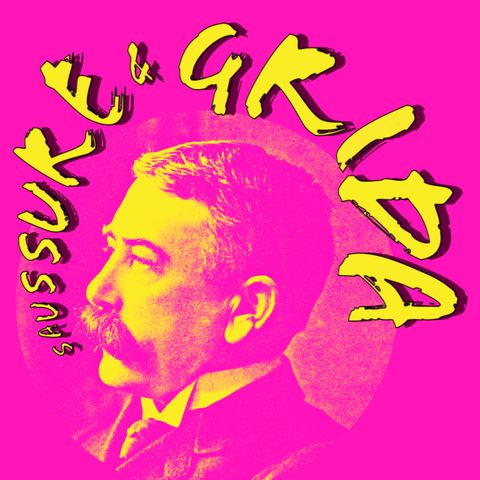12. Finalmente il generativismo!

Scarica e ascolta ovunque
Scarica i tuoi episodi preferiti e goditi l'ascolto, ovunque tu sia! Iscriviti o accedi ora per ascoltare offline.
Descrizione
Qui esploriamo il generativismo, la teoria sviluppata da Noam Chomsky negli anni '50 che ha rivoluzionato la nostra comprensione del linguaggio. Affronteremo insieme questioni come la natura innata della lingua,...
mostra di piùGrafiche: Gianluca La Bruna
La sigla è stata prodotta da White Hot e fornita da https://freebeats.io
FONTI:
- Chomsky, N. (1959). Review of B. F. Skinner Verbal Behavior. Language, 35:26–58.
- Chomsky, N. (1957). Syntactic Structures. The Hague: Mouton.
- Chomsky, N. (1965). Aspects of the Theory of Syntax. Cambridge, MA: MIT Press.
- Chomsky, N.(1995). The Minimalist Program, Cambridge, MA: MIT Press.
- Chomsky, N., Belletti, A., & Rizzi, L. (2001). Chapter 4: An interview on minimalism. In N. Chomsky (Ed.) On Nature and Language. Cambridge University Press. pp. 92–161.
- Culicover, P.W., & R.Jackendoff (2005), Simpler syntax. Oxford University Press.
- Deacon, T.W. (1997). The symbolic species: the co-evolution of language and the human brain. London: Penguin.
- Elsabbagh, M., & Karmiloff-Smith, A. (2006). Modularity of mind and language. In K. Brown (Ed.) Encyclopedia of Language and Linguistics. (pp. 218-224). IInd Ed. Oxford: Elsevier.
- Kluender, R., & Kutas, M. (1993). Subjacency as a processing phenomenon. Language and Cognitive Processes, 8 (4): 573–633.
- Koehn, Philipp (2020). Neural Machine Translation. Cambridge University Press.
- Kuhn T (1962). The structure of scientific revolutions. Chicago: University of Chicago Press.
- Landau, B. (1997). Language and experience in blind children: retrospective and prospective. In V. Lewis & G.M.Collis (Eds), Blindness and psychological development in young children. The British Psychological Society.
- Lepschy, G. (1979). Generativismo. Treccani Enciclopedia Italiana - IV Appendice. https://www.treccani.it/enciclopedia/grammatica-generativa_(Enciclopedia-Italiana)/
- Moro, A. (2013). The Equilibrium of Human Syntax: Symmetries in the Brain. Routledge.
- Moro A. (2015). I confini di Babele. Il cervello e il mistero delle lingue impossibili. Bologna: Il Mulino.
- Pinker, S., & Jackendoff, R. (2005). The faculty of language: What's special about it? Cognition, 95(2):201–236.
- Skinner, B. (1957). Verbal Behaviour. New York: Appleton Crofts.
- Skinner, B. (1974). About behaviorism. New York, NY: Alfred A. Knopf.
- Schwarz-Friesel, M. (2012). On the status of external evidence in the theories of cognitive linguistics. Language Science, 34(6):656–664.
- Tomasello, M. (2003). Constructing a language: a usage-based theory of language acquisition. Harvard University Press.
Informazioni
| Autore | Irene |
| Organizzazione | Irene Lami |
| Sito | - |
| Tag |
Copyright 2024 - Spreaker Inc. an iHeartMedia Company
